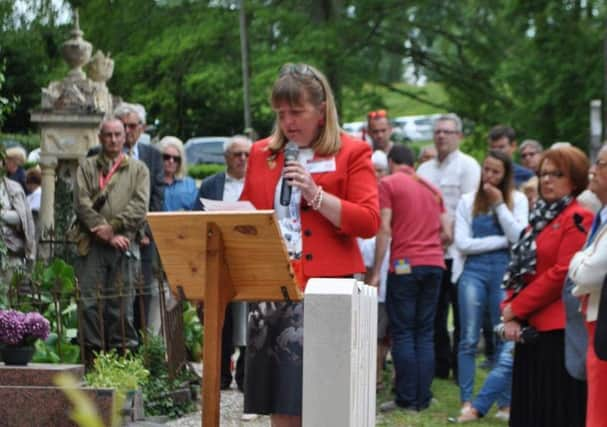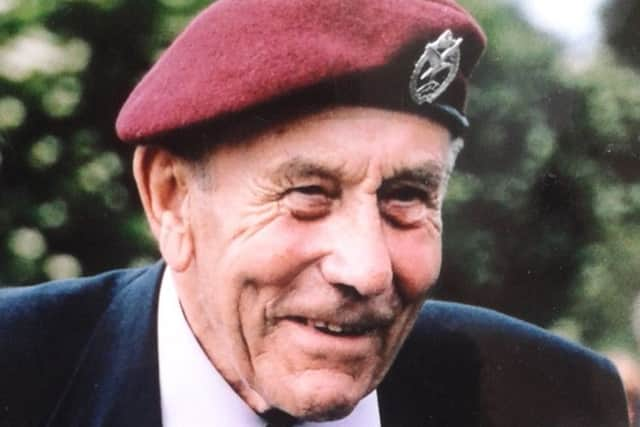Ceremony marks bravery of heroic D-Day glider pilots


That’s what the brave pilots of the The Glider Pilot Regiment were tasked with doing as they captured a strategically pivotal bridge in Normandy, allowing Allied forces to carry out the D-Day beach landings.
Jane Barkway-Harney, chairperson of The Glider Pilot Regiment Society, was accompanied by dozens of veterans, including seven glider pilots, as they travelled across the channel for a special ceremony to mark the 73rd anniversary of the amazing feat which helped turn the tide of the war.
Advertisement
Hide AdAdvertisement
Hide AdThe Horsham teacher’s father, Geoff Barkway, was one of the heroic pilots that helped take Pegasus Bridge, which stopped the Nazi re-enforcements from reaching the Allied troops as they stormed the beaches a few hours later.


Jane said: “It was a very emotional and wet and windy trip back to Pegasus Bridge to remember the night my father landed here 73 years ago.
“The Taxi Charity brought 97 veterans including seven glider pilot veterans and many family members that have not been before. Nothing is impossible.”
Geoff was one of several pilots who glided a 67 ft Horsa glider across the English Channel in the early hours of June 6, 1944.
Advertisement
Hide AdAdvertisement
Hide AdHe, along with co-pilot Peter Boyle, was tasked with landing the unpowered plane, carrying around 80 troops, on a tiny strip of land beside the Caen Canal.


The operation, later described by Allied Air Forces Commander Air Chief Marshall Leigh-Mallory as the greatest feat of flying in the war, was a success and prevented re-enforcements from reaching the beaches.
Speaking before his death in 2006 Geoff said: “If someone came to me now and said you are going to take a wooden airplane without engines, fly it six miles in the dark and land in a field half the size of a football pitch, I would ask to be excused. In those days you couldn’t.”
The history of glider pilots
Established 75 years ago the The Glider Pilot Regiment was one of the most unique and elite during the Second World War.
Advertisement
Hide AdAdvertisement
Hide Ad

Members were drawn from volunteers from other parts of the army and put through rigorous training before they were taught how to pilot the unpowered gliders.
At its height the regiment consisted of around 2,500 men, who were part of some of the most daring operations in World War II including the D-Day landings, the battle of Arnhem, and Operation Varsity, which saw allied troops cross the Rhine into Germany.
Around 553 were killed in action or died in training and today there are fewer than 150 veterans are left.
A new society has been launched by the relatives of these brave pilots to celebrate the history of the regiment.
Advertisement
Hide AdAdvertisement
Hide AdAs well as providing a point of contact for veterans, the society is engaging education and research projects and provides free assistance and research to relatives of those who served with the regiment.
Membership is open to all veterans of the regiment, their relatives and other interested people.
For more visit www.gliderpilotregiment.org.uk
Don’t miss out on all the latest breaking news where you live.
Here are four ways you can be sure you’ll be amongst the first to know what’s going on.
1) Make our website your homepage
2) Like our Facebook page
3) Follow us on Twitter
Advertisement
Hide AdAdvertisement
Hide Ad4) Register with us by clicking on ‘sign in’ (top right corner). You can then receive our daily newsletter AND add your point of view to stories that you read here.
And do share with your family and friends - so they don’t miss out!
Always the first with your local news.
Be part of it.